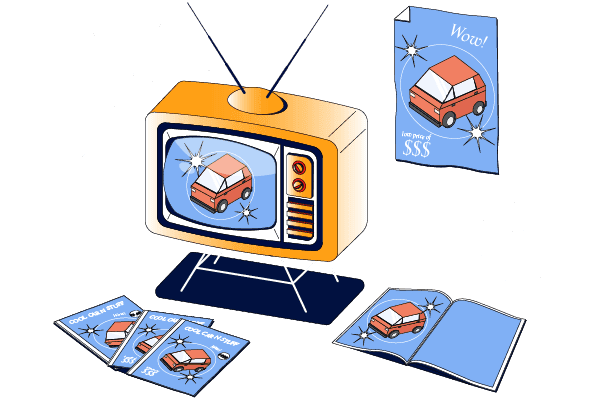Although often overlooked, marketing channels play a critical role in helping brands reach their sales and marketing goals.
Think about it: How much sales do you think you can generate from an unknown product? Or how many users do you think will sign up for your products if they’ve never heard of them?
You simply cannot build and hope that customers or users will come. Instead, you need to reach them. And you can do so by using the proper marketing channels.
But what exactly is a marketing channel? How useful are they? And what are the different types of marketing channels you can use for your business today?
Let’s find out.
A marketing channel is any medium or tool through which a company markets its products and services to its target end-user or customer. The primary goal of a marketing channel is to create a connection between your brand and customers.
Without this connection, potential customers would likely never hear about your products and services, reducing the chances of buying from you.
That’s why it’s crucial to consider marketing channels as a core part of your marketing strategy.
However, you can’t just jump the gun and choose a marketing channel because other companies use that particular channel. Instead, you should find out the different marketing channels available and choose the one your audience already uses or are familiar with.
Here are some marketing channels and how you can use them best.
Websites
You can think of your website as your digital home office or headquarters on the internet.
It is typically from your website that a potential customer would book a demo, ask to speak with a sales representative, and eventually order or buy your product.
Your website is also helpful for educating your audience about the solutions your products and services provide and building excitement about new product launches.
Here’s an example of CoSchedule’s website.

The website hosts a wide array of tools and resources that potential customers can use to become more familiar with CoSchedule and, in turn, become customers.
For your website to work, you’ll need to create different types of content for each stage of your buyer’s journey (ToFU, MoFU, and BoFU) and in other formats like blog posts, case studies, product videos, and so on.
You’ll also need to promote your website using a mix of other marketing channels that make up this list.
Search Engines
Search engines are online tools designed to search websites and return results based on a user’s search query. These results are ranked based on each search engine’s unique algorithm.
The most common search engines are Google and Bing, with Google taking up 92.48% of the entire market share.
Optimizing your website for search engines increases your chances of ranking higher on the search engine results page (SERP) and generating traffic and leads for your business.
With over 3.5 billion searches daily, you can be sure your target customers are making search queries about your products and services. By ranking for these queries, you are in a prime position to capture new leads for your sales funnel.
CoSchedule has a ton of blog posts and other content optimized to help users find them when they search specific keywords in search engines.
For instance, anyone looking for “blog post ideas” would come across our post first, which helps us attract leads organically.
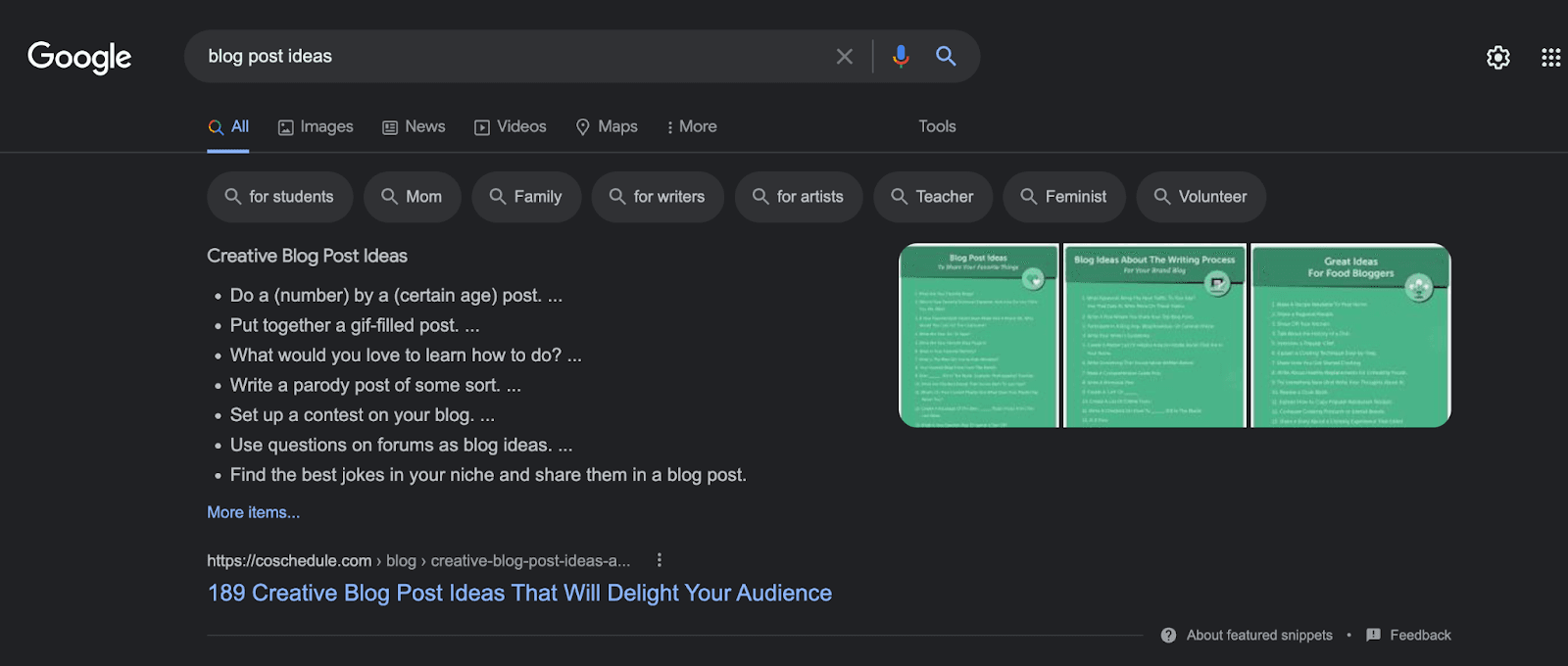
To measure your SEO efforts, look for metrics like organic traffic, new backlinks, dwell time, conversion rate, bounce rate, and so on.
Social Media
With over 4.62 billion people worldwide using at least one social media platform, it’s a no-brainer for you to use social media as a marketing channel to connect with your dream customers.
These social media users not only use it to communicate with friends and family, but studies show that one in three users (or 33%) use it to research new products.
On average, these users spend around 2 hours 27 minutes on social media platforms. So how can you interact with them during that time?
You can practice social selling to identify ideal prospects, build strong relationships with them, and then ask for a sale.
One way to build strong relationships is by using your social media accounts to answer questions your ideal prospects might have.
For instance, here’s a tweet responding to a prospect’s question about using our product.
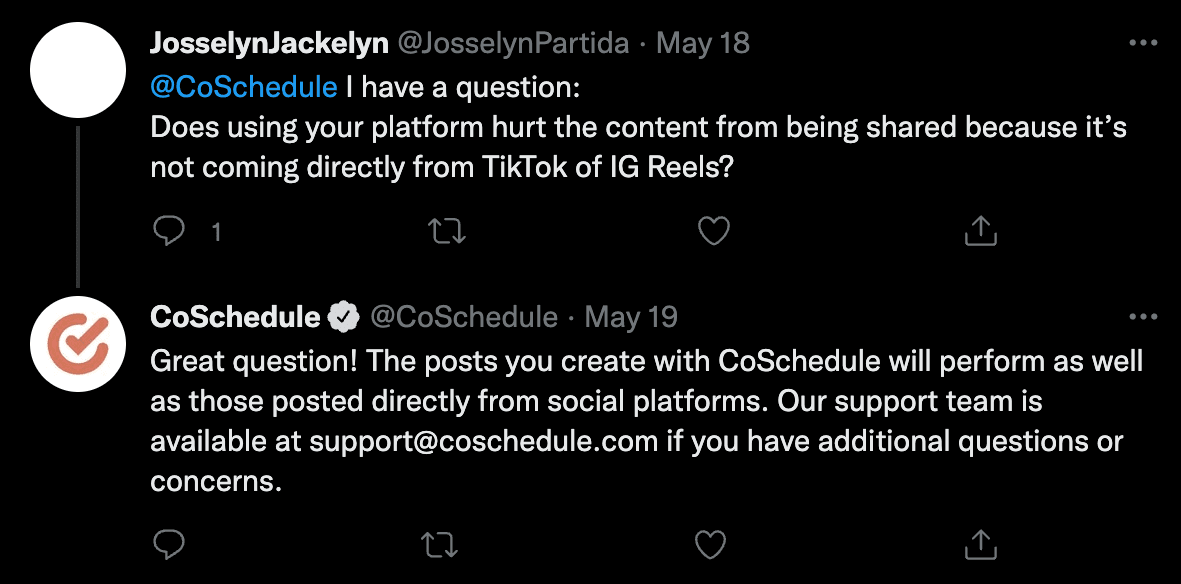
Other practical ways to use social media as a marketing channel are creating content your audience wants to see, resolving customer complaints swiftly, building a community, and running giveaways.
Email remains one of the most influential and effective communication channels today. One great thing about email is that it’s usually permission-based — meaning people agree to join your email list, showing a current interest level.
Once you’ve built your email list, you can send marketing messages that educate, engage, and convert these leads into customers.
Considering that you own your list, you can reach your leads anytime without having to deal with uncontrollable social media algorithms or search engine updates. Regarding nurturing leads through the sales funnel, 31% of B2B marketers mention email newsletters as the highest performing channel.
Beyond newsletters, you can also send cart abandonment, welcome, anniversary, promotional, milestone, re-engagement emails, etc. Having a solid email marketing strategy is vital.
Here’s an example of an anniversary sale email from us.
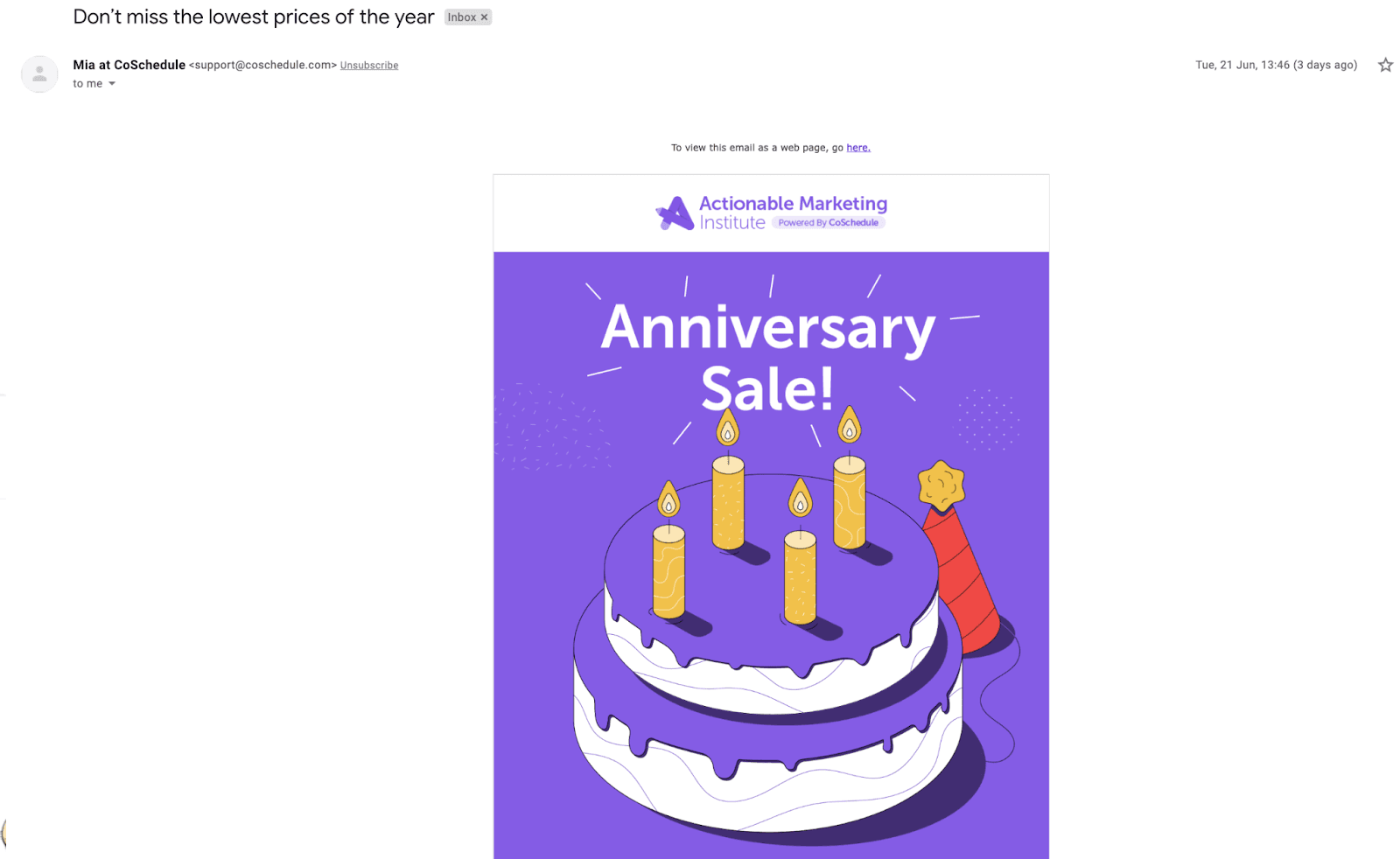
Direct Selling
Direct selling involves marketing or selling to customers without needing intermediaries, third parties, or other retailers. This type of marketing works best for small businesses with limited budgets who thoroughly understand their ideal customers.
In 2020, the direct selling market racked in almost $180 million in sales, which would have been more if not for the pandemic.
Marketers who perform direct selling typically combine it with other channels like email marketing, social media, SMS marketing, and the likes.
Amway, the world’s leading direct selling company, uses Instagram to highlight its products and customers, which fuels the brand’s sales cycle.

Word-of-Mouth Marketing
Probably the oldest form of marketing in the book, word-of-mouth relies on customers recommending your product and services to people in their network.
There’s a reason why this marketing channel has been around for a long time — hint: Because it works. In 2021, recommendations from friends and family, i.e., word-of-mouth, were considered the most trusted channel among 90% of consumers.
A great example of this type of marketing in action was the “Share a Coke with” campaign, where people worldwide sort to find their names on Coca-Cola bottles. And when they did find their names, it wasn’t long before they urged friends and family to do the same.

Considering how cheap and scalable it can be, any brand, no matter its size, can start using word-of-mouth marketing as part of its marketing strategy.
Some things you can do to make your word-of-mouth marketing a success include creating a truly valuable product/service, encouraging customers to post about it on social media, offering an incentive, and creating a referral program.
What Is The Meaning Of Omnichannel Marketing?
Omnichannel marketing refers to integrating various channels to offer customers a consistent experience across all platforms and mediums they can use to interact with a brand.
Whether a consumer visits a brand’s website, sends a message on Instagram, or even visits a physical store, they will have the same consistent and seamless experience.
Omnichannel campaigns are so effective that marketers can enjoy around a 494% increase in order rates compared to campaigns that use single channels.
Here are some examples of how the omnichannel marketing strategy could work:
- A customer receives an email or SMS containing a promo code after buying something at a physical store
- Consistent promotions and branding on a brand’s email, website, and physical store
- A customer has items added to their cart on your website once they add the same items while using your app
Starbucks uses an excellent omnichannel marketing strategy you can imitate. To kick off their omnichannel experience, Starbucks requires customers to register with their email addresses (or sign up for their newsletter) to access free wifi.
In the newsletter, customers are then met with unique offers and encouraged to join “Starbucks Rewards” and download the app, where they’ll get more deals and special offers. The consistent messaging and experience customers get from Starbucks, from the brick-and-mortar store to email and then to the mobile app, helps drive sales and retention.
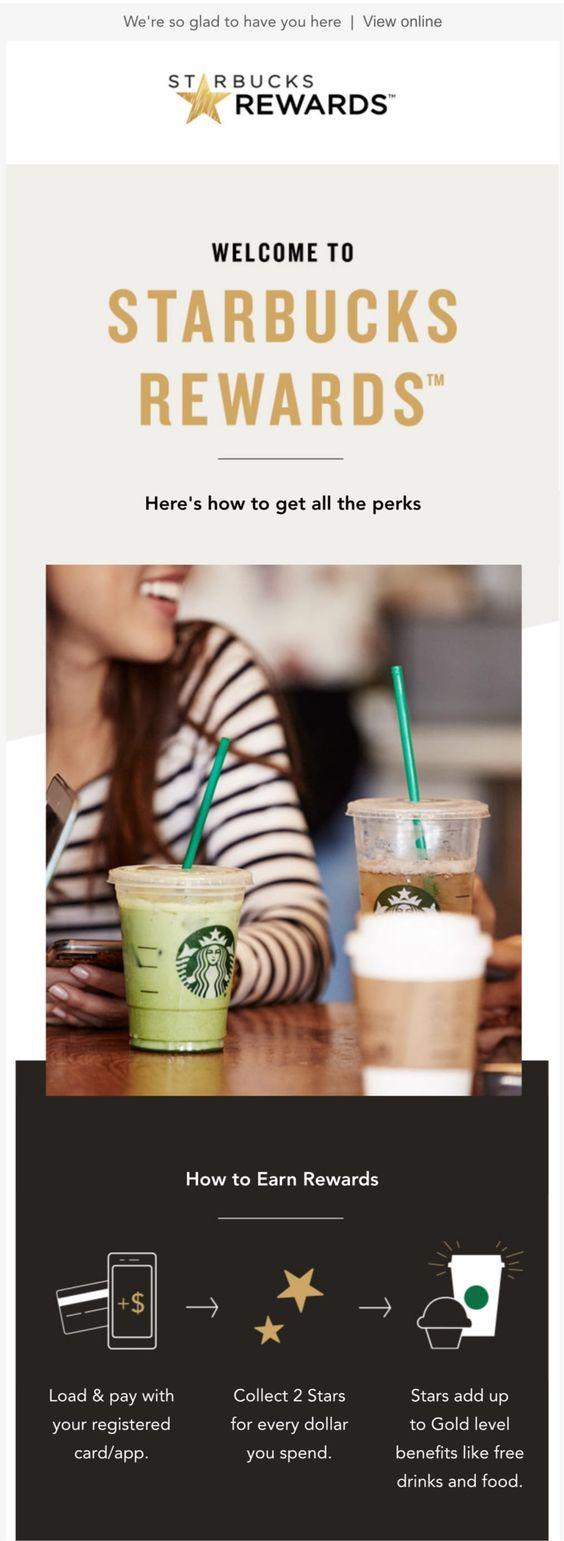
Although somewhat similar, omnichannel marketing should not be confused with multi-channel marketing.
What Is The Meaning Of Multi-Channel Marketing?
Multi-channel marketing uses more than one marketing channel to reach your target customers.
One main difference between omnichannel and multi-channel marketing is that the messaging across multi-channel marketing is usually not consistent or the same. Also, multi-channel marketing focuses on maximizing the strength of each channel to reach as many people as possible.
However, that’s not to say multi-channel marketing isn’t effective, too, as marketers who use 4-6 marketing channels experience more campaign success than those who use single channels.
An example of multi-channel marketing in action is this billboard from Uber.
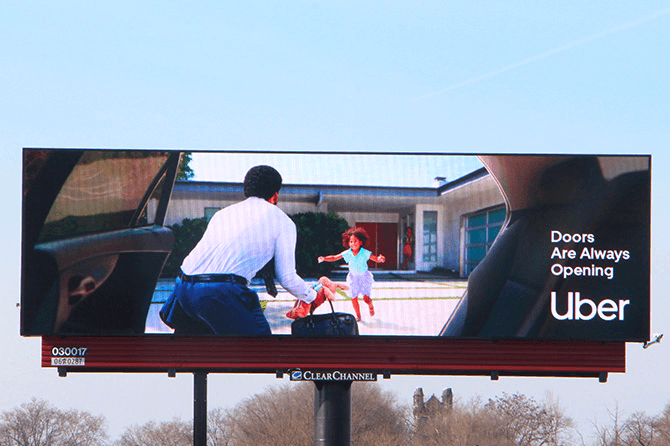
The billboard boosts Uber’s brand awareness — something Uber also tries to achieve using other channels like social media and paid ads.
